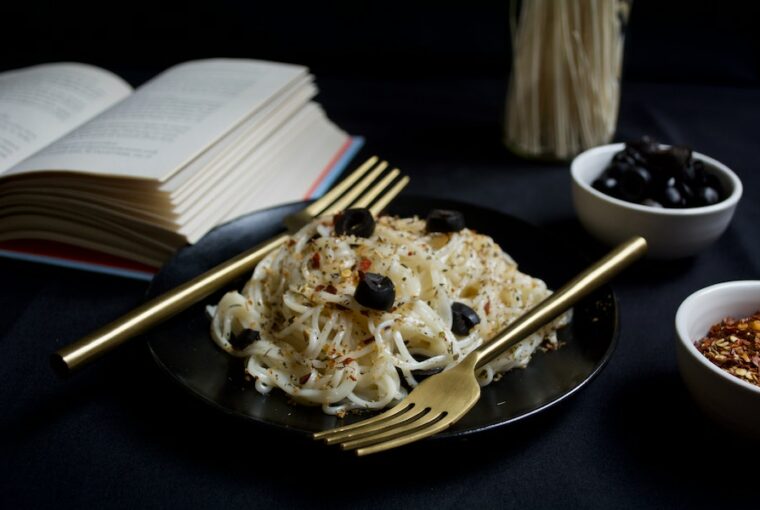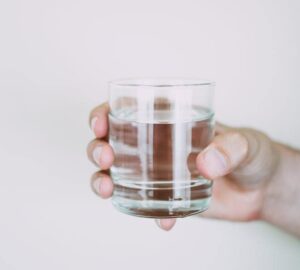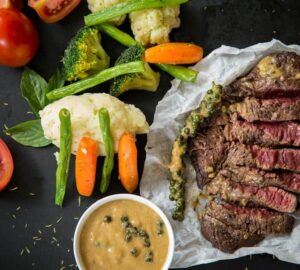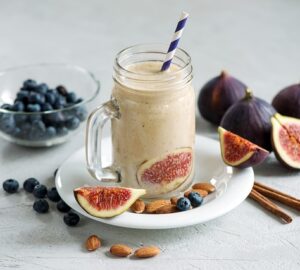Yakisoba is a popular Japanese noodle dish that is also known as fried buckwheat noodles. The simple preparation of yakisoba makes it an ideal home-cooking meal for busy individuals or families with limited time for preparation and cleanup. It’s also one of the most affordable dishes in the Japanese food category, making it a go-to dish when eating out on a budget or if you are trying to cut back on your spending. Yakisoba is usually served as a side dish to accompany other main courses, but it can also be eaten as an entire meal. Yakisoba has many variations but all follow a similar recipe — rice flour noodles tossed in a sauce made from ketchup, soy sauce, and mirin (a sweet rice wine), accompanied by chopped cabbage, pork, and other ingredients such as green onions and broccolini. Whether you’re trying to eat better or just want to add another great recipe to your repertoire, here’s what you need to know about yakisoba and how you can make this delicious Japanese side dish even healthier:
Is Yakisoba Healthy?
It can be healthy, but it also depends on the ingredients that are used. For example, some yakisoba recipes might include unhealthy ingredients like high-sodium soy sauce or processed meats. If you want to make a healthier yakisoba dish, try using low-sodium soy sauce and fresh or frozen vegetables. You could even add some cooked chicken or shrimp to the mix for added protein.
How To Make Healthy Yakisoba
Choose the Right Noodles
One of the easiest ways to make healthy yakisoba is to simply use whole-grain noodles instead of the white variety. The whole-grain noodles will provide you with more fiber, protein, vitamins, and minerals than their white counterparts and will help to keep you feeling full for longer. Whole-grain pasta and rice noodles are two great options for making your own healthy yakisoba at home. Rice noodles are made from rice flour and can be found in Asian grocery stores or in most supermarkets. Pasta is made of durum wheat flour that is milled into a soft, fine texture without any bran or germ. They are usually sold by weight so they do not need to be cooked before use.
Choose Healthy Ingredients
Replacing some of the ingredients in your favorite yakisoba recipe with healthier alternatives may help you save money while still enjoying a delicious dish that’s packed with flavor. For example, replace the ketchup with tomato sauce or canned tomatoes. Use low-fat or fat-free yogurt instead of the traditional mayonnaise. Swap out the pork for leaner cuts of meat, such as turkey, chicken breast, or tofu. And use broccolini instead of cabbage to make a lighter version that’s just as flavorful and delicious.
Add Whole Grains
You can also try adding more whole-grain ingredients to your recipe for healthier yakisoba if you’re feeling creative. For example, you could add millet or quinoa in place of some of the other ingredients like rice flour or quick-cooking noodles (which are often made with white flour). Another fun way to get a whole grain into your meal is by serving it with a side dish such as brown rice, brown quinoa, wild rice, barley, buckwheat groats (kasha), farro (a wheat berry), oatmeal (rolled oats), or whole-grain pasta.
Season with Sesame Oil and Soy Sauce
Whether you’re making your own healthy yakisoba at home or ordering it out, don’t forget to add a little extra something to the mix. The easiest way to do this is by adding a little sesame oil and soy sauce to the pan before adding the noodles. You can also use other seasonings such as garlic powder, ginger, chili powder, or freshly grated ginger for extra flavor. If you want to make your healthy yakisoba even more savory, you can also add some fresh chopped green onion for some color and flavor!
Don’t Forget the Toppings!
The best part about making your own healthy yakisoba at home is that you get to choose all of the toppings that go on top of your noodle bowl! Here are some ideas: shredded carrots, sliced cucumbers, green onions, bean sprouts, red bell pepper slices, and/or snow peas. If you’re in the mood for something different, try adding some shredded nori (seaweed) to your noodles to give them an even more savory flavor.
Nutrition Facts For Yakisoba
1. Yakisoba Nutrition Facts
Yakisoba is a good source of protein, fiber, and iron. Each serving contains 13 grams of protein and 1 gram of fiber. It also contains 3.2 grams of iron, which is more than half of the recommended daily intake for most people. Iron is essential for hemoglobin production in red blood cells, which are responsible for carrying oxygen to all parts of your body. It also plays a role in making DNA and certain proteins necessary for growth and development. Iron deficiency has been linked to anemia, which may be present if you do not eat enough iron-rich foods or consume too much alcohol or caffeine.
2. Yakisoba Serving Size
The recommended serving size for yakisoba is one cup per person, but it can be eaten as part of a meal with the other main ingredients or simply as a side dish to accompany other dishes. If you are eating it as a main dish, try to eat at least two cups of yakisoba per person, although it may be possible to eat more.
3. Yakisoba Nutritional Information
There are no significant vitamins or minerals in yakisoba, but it is a good source of protein and fiber. Each serving contains 13 grams of protein and 1 gram of fiber, which is more than the recommended daily intake for most people. It also contains 3.2 grams of iron, which is more than half of the recommended daily intake for most people. Iron is essential for hemoglobin production in red blood cells, which are responsible for carrying oxygen to all parts of your body. It also plays a role in making DNA and certain proteins necessary for growth and development. Iron deficiency has been linked to anemia, which may be present if you do not eat enough iron-rich foods or consume too much alcohol or caffeine.
4. Yakisoba Recipes
Yakisoba can be served as a side dish to accompany other main courses, but it can also be eaten as an entire meal by itself with other ingredients such as pork and green onions added to the bowl before eating. If you are eating it as a main dish, try to eat at least two cups of yakisoba per person, although it may be possible to eat more.
5. Yakisoba Cooking Tips
The most important part of cooking yakisoba is to cook it in a skillet. If you do not have one, a heavy-bottomed pan will work just as well. When frying, you should also use a non-stick skillet or pan because the oil used to cook the noodles can make the bottom of the noodles sizzle. Some people also add katakuriko (dried bonito flakes) to their yakisoba dishes, but this is optional and it can be added at any time during the cooking process.
6. Yakisoba Side Effects and Interactions
Yakisoba is considered safe for consumption when prepared in moderation. It contains no additives that would cause side effects or interactions with other medications or supplements, so there are no known side effects of yakisoba consumption. However, if you are pregnant or breastfeeding, talk to your doctor before eating yakisoba.
How To Avoid Unhealthy Ingredients In Yakisoba
1. Buy the Right Starch
Yakisoba is made from wheat flour noodles, which are often enriched with starch or starch derivatives such as cornstarch or dextrin. Bleached and unbleached wheat flour noodles are both common types of yakisoba noodles. The most common type of yakisoba noodles sold in the United States is a bleached and unbleached wheat flour noodle made by several brands including Hungry Man, Nissin, and Tostitos. Unbleached wheat flour noodles can be found at Asian grocery stores and online retailers. These types of noodles are more expensive than regular white flour noodles, but they will cost you less than their bleached counterparts due to their higher nutritional value.
2. Buy the Right Sauce
You can make your own sauce using a combination of ketchup, soy sauce, mirin (rice wine), and salt to flavor the yakisoba dish with a little sweetness. Or you can purchase one that’s already made. Many Asian supermarkets and online retailers sell their own brand of yakisoba sauce, which is often packed in a large jar. You can also purchase premade sauces that are made with yakisoba noodles, but the sauces sold at Asian supermarkets may contain more sodium than those sold at grocery stores. The best option is to make your own sauce from scratch by combining ketchup, soy sauce, mirin, and salt in a bowl and mixing until the mixture reaches the desired consistency.
3. Buy the Right Meat
You can substitute chicken for pork when making this dish because pork is not commonly used in other types of Japanese dishes such as ramen or sushi, but you will need to use more soy sauce to achieve a similar flavor. Pork is less fatty than chicken and it helps make your yakisoba dish healthier by increasing its protein content and decreasing its fat content. If you’re trying to eat healthier, buy lean pork instead of regular cuts of pork.
4. Cook in a Healthy Way
You can cook your yakisoba in a healthy way by using extra-virgin olive oil or avocado oil to sauté the noodles and then mixing the sauce with the noodles before serving. The amount of fat you use in your yakisoba dish will depend on how much oil you use to sauté the noodles, but you should use less than half a tablespoon of oil per serving. If you don’t want to make your own sauce, or if you don’t have enough time, buy premade sauces from Asian markets or online retailers. These types of sauces are often packed in jars and they’re easier to store than homemade sauces because they don’t need to be refrigerated after opening.
Conclusion
Yakisoba is a delicious Japanese noodle dish that is high in carbohydrates, protein, and fiber. It is also a good source of minerals such as calcium, iron, and potassium. However, you can make this dish even healthier by adding more vegetables and using low-fat meat. You can also reduce the sodium content by using low-sodium soy sauce or by replacing ketchup with healthier alternatives such as apple sauce or apple cider vinegar. You can also add more vegetables to the dish to reduce the sodium content. Yakisoba is a healthy dish that can be enjoyed at any time of the day. Whether you are eating it as a main course or as a side dish, it is a great way to get your daily macronutrient requirement.




